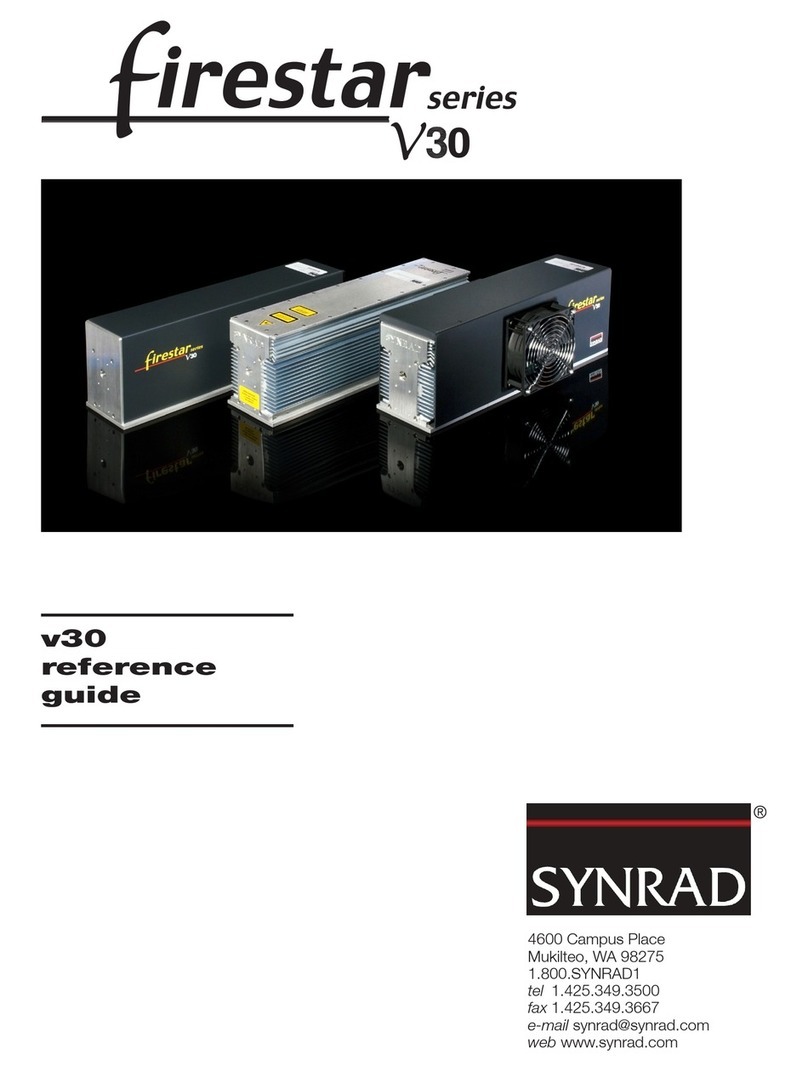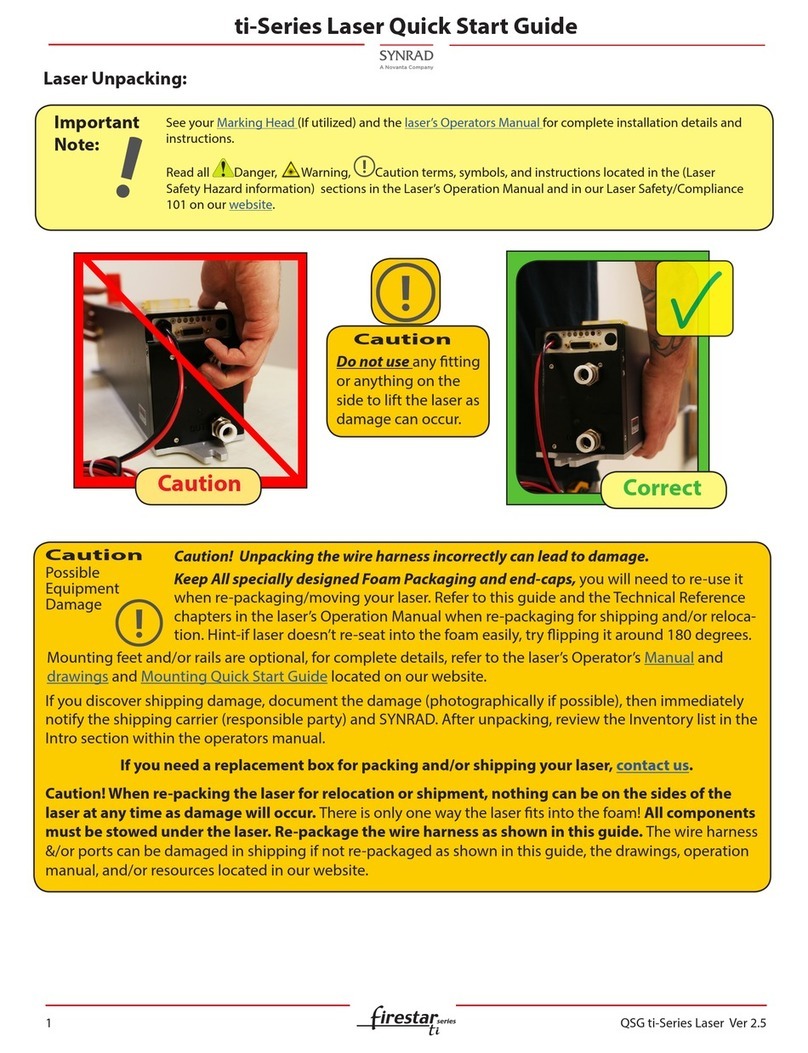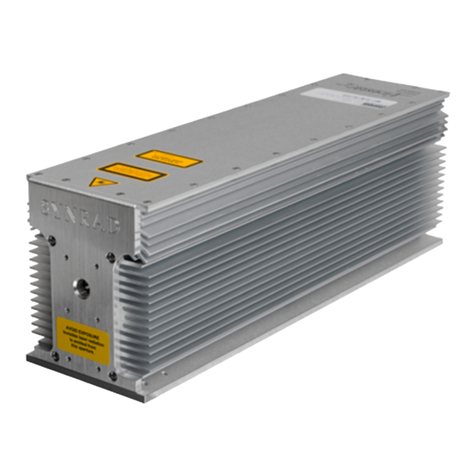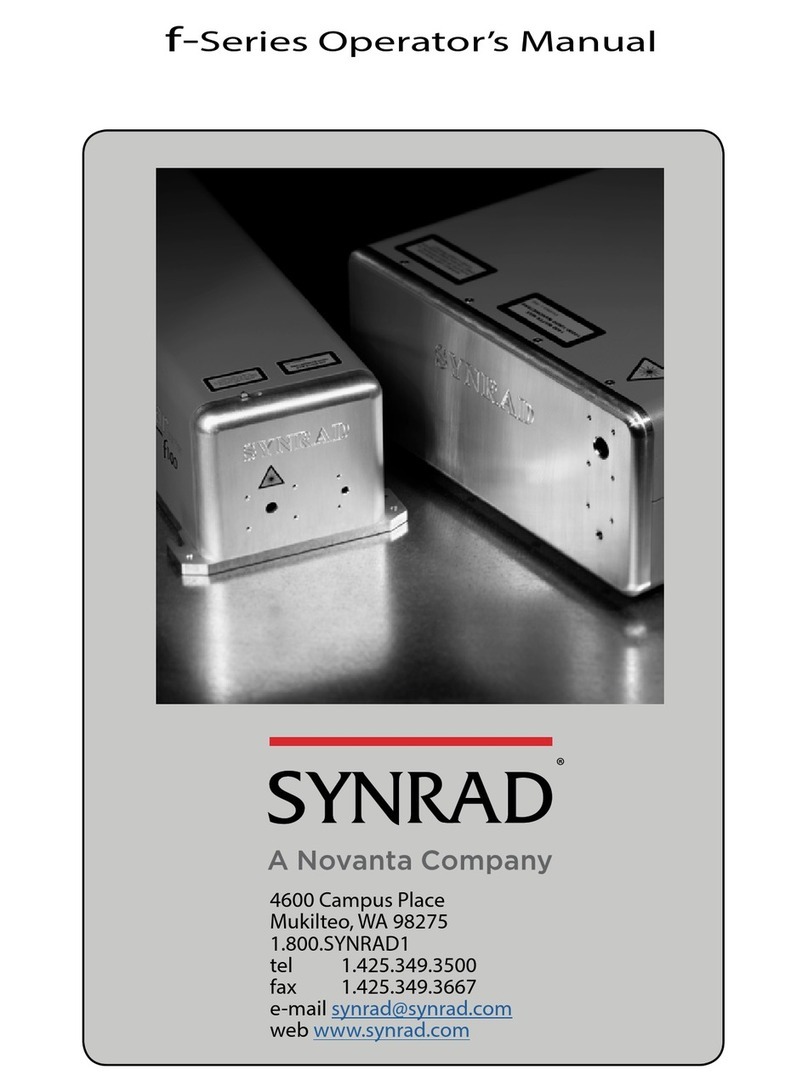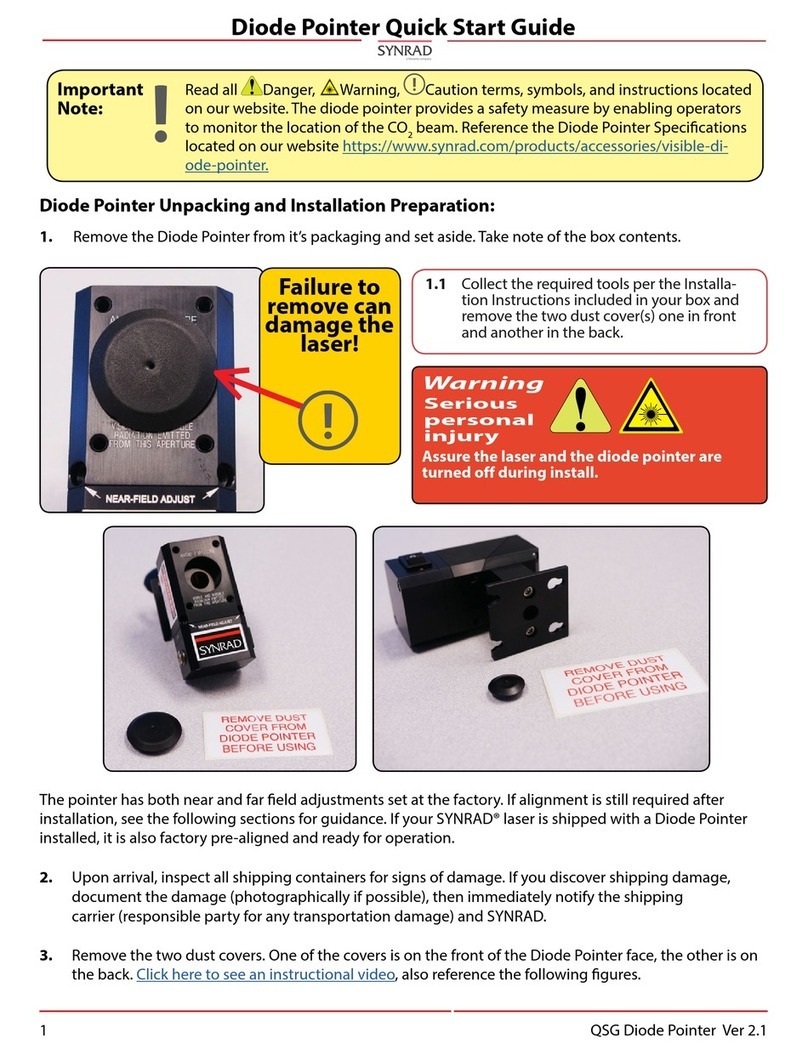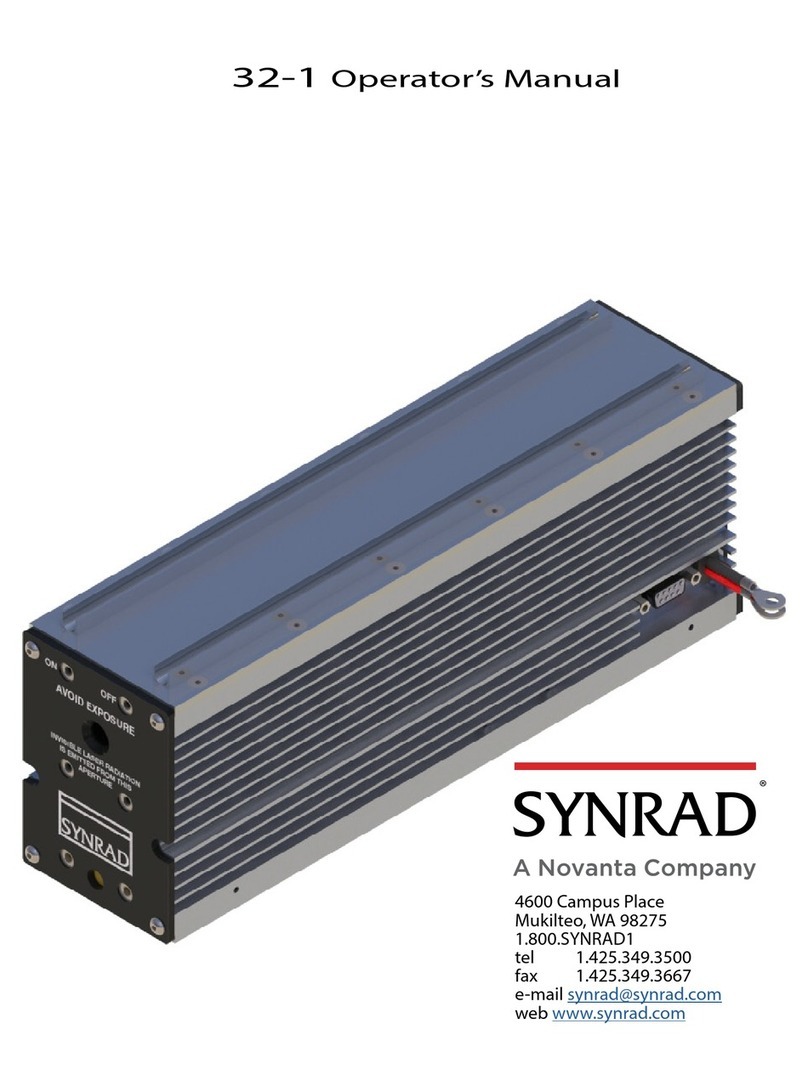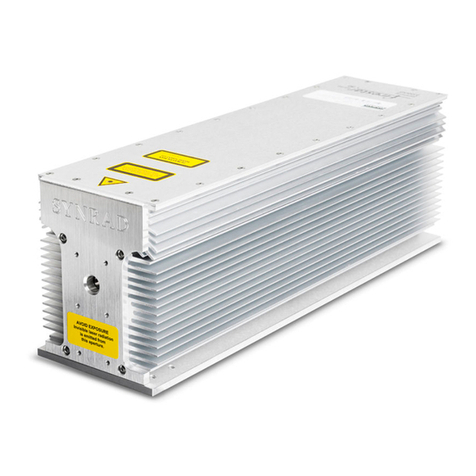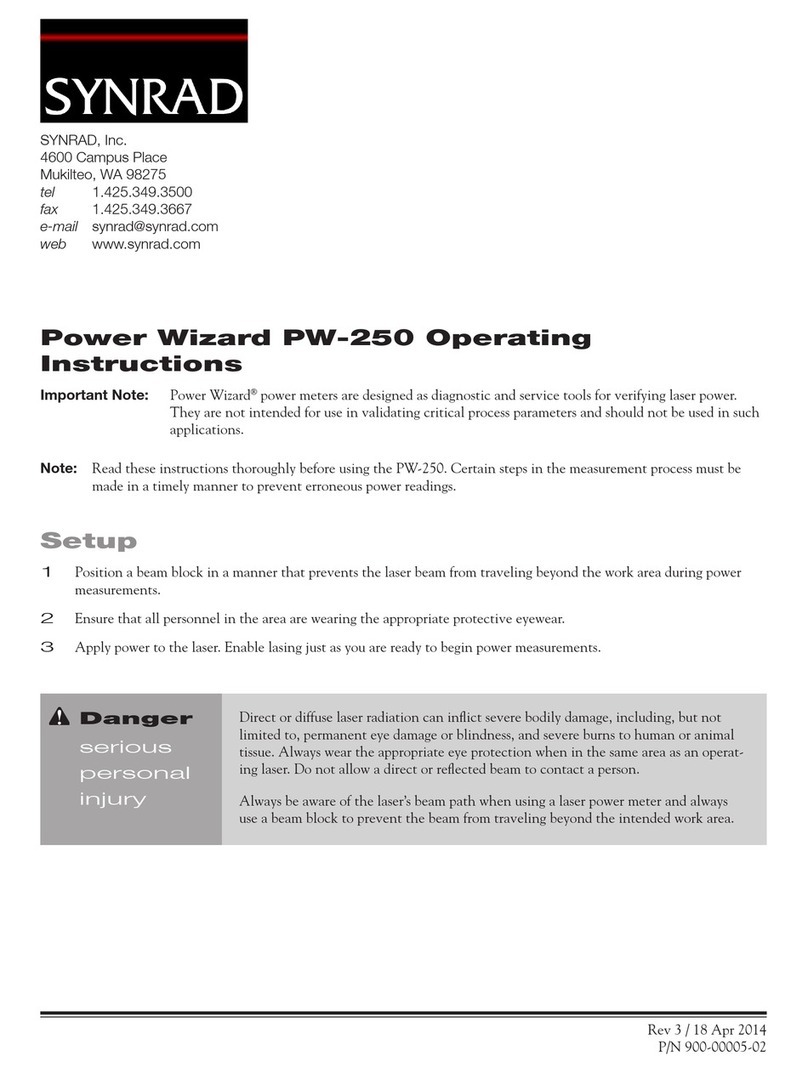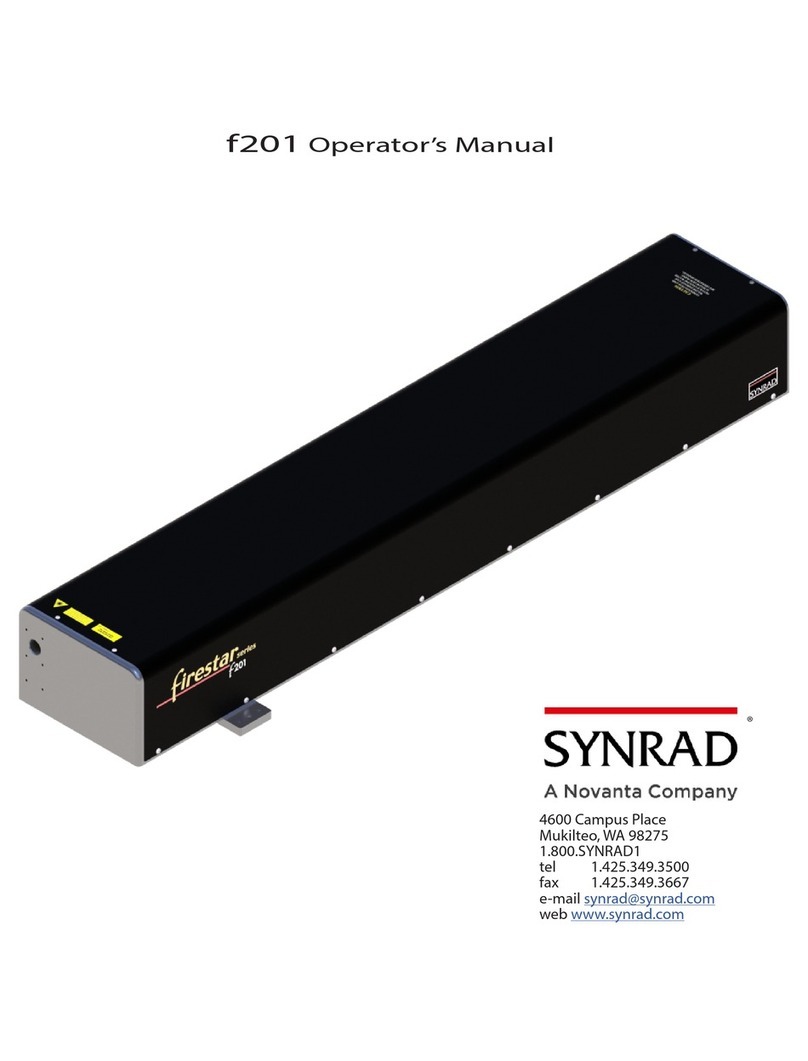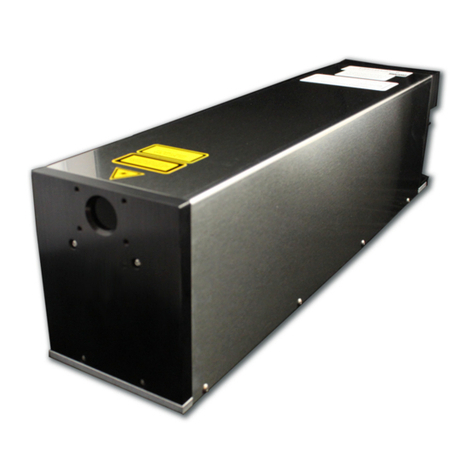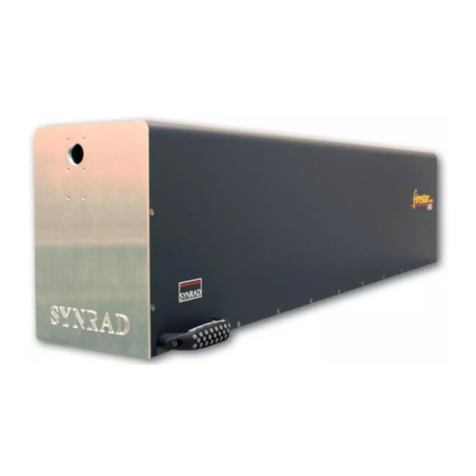
1
Synrad Firestar OEM vi30 reference guide
Table of Contents
Contents
Warranty information.......................................................2
Trademark/copyright information ....................................2
Laser safety........................................................................3
Terms............................................................................3
General hazards............................................................3
Firestar OEM vi30 label locations ....................................6
Compliance requirements.................................................7
Center for Devices and Radiological Health
(CDRH) requirements.................................................7
Federal Communications Commission
(FCC) requirements.....................................................7
European Union (EU) requirements ...........................8
Declaration of Conformity ...............................................11
Introduction......................................................................12
Inventory...........................................................................12
Ship kit.........................................................................12
Ship kit contents..........................................................12
Installation........................................................................13
Mounting......................................................................13
Cooling.........................................................................15
Electrical connections..................................................15
Control connections ....................................................16
Controls and indicators ....................................................17
Operation..........................................................................18
Status LEDs ..................................................................18
Start-up ........................................................................18
DB-9 I/O connector..........................................................20
Firestar vi30 general specifications ...................................22
Firestar OEM vi30 package outline drawings...................23
Troubleshooting ...............................................................26
Status indications ........................................................26
Laser faults ...................................................................27
DB-9 I/O connector .....................................................28
Optics ...........................................................................28
Figures
Figure 1 Firestar OEM vi30 label locations ...................6
Figure 2 European compliance mark..............................10
Figure 3 Firestar OEM vi30 mounting options..............13
Figure 4 Optional mounting feet installation................14
Figure 5 Recommended vi30 cooling fan locations ........15
Figure 6 Firestar vi30 external temperature monitor-
ing point...........................................................15
Figure 7 Firestar OEM vi30 controls and indicators......17
Figure 8 Firestar OEM vi30 standard package outline
and mounting dimensions................................23
Figure 9 Firestar OEM vi30 package outline and mounting
dimensions – with optional customer-installed
‘Tall’ mounting feet..........................................24
Figure 10 Firestar OEM vi30 package outline and mounting
dimensions – with optional customer-installed
‘Tall/Wide’ mounting feet...................................25
Tables
Table 1 Class IV safety features.....................................9
Table 2 European Union Directives .............................10
Table 3 Ship kit contents..............................................12
Table 4 DB-9 I/O connector pinouts ............................21
Table 5 Firestar OEM vi30 specifications .....................22
Table 6 DB-9 I/O connector status signals ..................26
Firestar OEM vi30 Reference Guide
Version 1.0
Released December 2010
Part number 900-20162-01
4600 Campus Place
Mukilteo, WA 98275 USA
1.800.SYNRAD1
tel 1.425.349.3500
fax 1.425.349.3667
web www.synrad.com

